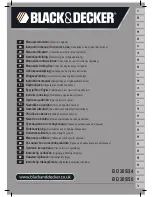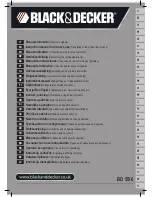
A
PPLICATION
GUIDELINES
19
FRCC.PC.017.A1.02
S
YSTEM
DESIGN
RECOMMENDATIONS
Crankcase heater
Crankcase heaters provide extra compressor pro-
tection, and should be considered for all applica-
tions. For initial installation of precharged sys-
tems and for any extended power interruptions,
the crankcase heater should be energized for 24
hours prior to compressor startup.
The minimum sump temperature is in the range
from 6K to 17K above saturated suction tempera-
ture. Refer to the fl ood back test criteria section
"System design recommendations".
Minimum sump
superheat
Loss of charge protection
Performer® Heat Pump scroll compressors do not
include a thermal valve protection; therefore, all
applications should consider loss of charge pro-
tection :
• A low pressure switch in the low pressure side of
the system is required.
• A discharge line thermostat set no higher than
135°C is recommended. The thermostat must be a
manual lockout type device (or electrical lockout
circuit) and be located within 150 mm of the com-
pressor discharge connection. The discharge line
thermostat must be insulated to insure proper
sensing and operation.
In installations with good oil return and line runs
up to 15 m, no additional oil is required. If instal-
lation lines exceed 15 m, additional oil may be
needed. 1 or 2% of the total system refrigerant
charge (in weight) can be used to roughly defi ne
the required oil top-up quantity.
Always use oil from new cans.
Top-up the oil while the compressor is idle. Use
any accessible connector on the compressor suc-
tion line and a suitable pump.
Oil level checking and
top-up
Performer® Heat Pump scroll compressors are
machines with fi xed volume ratio, and operate
more effi
ciently near the design pressure ratio. In
the extreme, do not exceed a 11:1 pressure ratio
(absolute discharge pressure to absolute suction
pressure) for extended periods. The Performer®
Heat Pump scroll compressor is equipped with
an internal pressure relief valve for protec-
tion against blocked condenser and fan failure
conditions.
High pressure ratio
Danfoss recommends the use of a thermostatic
expansion valve for all air conditioning and heat
pump applications. A TXV has two key benefi ts: it
provides modulating control of the system under
varying load conditions, and it protects the com-
pressors from fl ood back during adverse running
conditions.
Excessive liquid refrigerant fl ood back during
steady state operation is a major system design
consideration for all types of compressors. Oil di-
lution that occurs with excessive fl ood back can
have a signifi cant adverse eff ect on bearing reli-
ability. Suction accumulators may be required in
some applications to prevent fl ood back.
When the use of fi xed orifi ce devices is specifi ed
in the system design, and when a TXV is applied
at the limit of its control range, the following tests
should be conducted to determine if a suction
accumulator is needed. Refer to the fl owcharts
section "System design recommendations" to de-
termine when to apply the excessive liquid fl ood
back test.
Preventing liquid fl ood
back
Testing for excessive
liquid fl ood back
Water utilising systems
Apart from residual moisture in the system after
commissioning, water could also enter the re-
frigeration circuit during operation. Water in the
system shall always be avoided. Not only because
it can shortly lead to electrical failure, sludge in
sump and corrosion but in particular because it
can cause serious safety risks.
Common causes for water leaks are corrosion and
freezing.
Corrosion: Materials in the system shall be compli-
ant with water and protected against corrosion.
Freezing: When water freezes into ice its volume
expands which can damage heat exchanger walls
and cause leaks. During off periods water inside
heat exchangers could start freezing when ambi-
ent temperature is lower than 0°C. During on pe-
riods ice banking could occur when the circuit is
running continuously at too low load. Both situa-
tions should be avoided by connecting a pressure
and thermostat switch in the safety line.











































